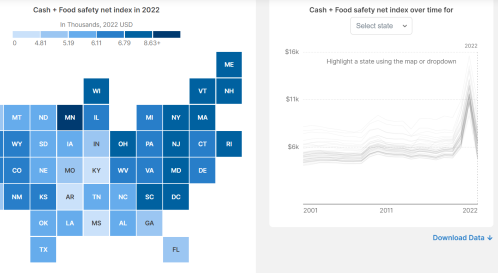In his typically brief inaugural address last week, Gov. Jerry Brown warned Californians to expect pain, frustration and sacrifice in the budget he will present this week. It was pretty standard rhetorical fare for a governor staring at a massive budget deficit.
But beyond that pro forma warning, Brown spoke about something else – something that suggests he sees past both the immediate budget crisis and traditional responses and into the deeper problems with California’s, and other states’, public financial infrastructure. He talked about accountability, about realigning governmental functions and about the need to “honestly assess our financial condition.”
Too many elected officials stand in front of the cameras and look concerned and talk about “tough choices” and then either do very little or simply slash budgets without regard to consequences or strategy. They further compound their problems – and pass them onto their successors – by ignoring what we call “structural deficits.” These deficits are the ones created when policy decisions and budgeting processes fail to provide an appropriate long-term balance between revenue-raising and expenditure levels.
Brown said, “A problem can be solved or forgotten, but a condition always remains.” The current budget crisis is a “problem,” albeit a very large one. The policies and governmental structures that helped create the problem are the “condition.”
It is that “condition” that we analyze in a report published last week, “Structurally Unbalanced: Cyclical and Structural Deficits in California and the Intermountain West.” We estimate that about one-third of the total deficit California faces right now is due to these structural deficits.
Simply put, there has been a lack of sound, prudent fiscal policy guiding the taxing-and-spending process, for which voters and their elected representatives share responsibility. If California and many other states who have similar problems are to put themselves in a stronger and more sustainable financial condition, deep, lasting and difficult structural changes will have to be made.
This is not just a matter of cutting spending, although spending needs to be aligned with revenue. It is more a matter of taking a balanced approach to budgeting, diversifying the tax base, giving local communities more flexibility and control, maintaining adequate rainy-day funds and adopting a fact-based, common-sense budget process that includes a clear explanation of the consequences of policy decisions.
Take Proposition 13 as an example. Enacted in 1978, the intent was to limit local property taxes, and that succeeded. But it also undermined the capacity of local governments to provide services and shifted both control and responsibility to the state government. Brown has said he wants to work to redistribute that power locally.
Ten years later, voters approved Proposition 98, requiring nearly half of all new revenue be dedicated to supporting education. While a laudable goal, that also meant lawmakers had less flexibility in budgeting. More recently, voters approved a measure allowing for a majority vote to pass a budget but a two-thirds majority for tax or fee increases.
Meanwhile, California enacted permanent spending increases when times were better and continued those even as the economy fell. On the revenue side, California is the only one of the 22 oil-producing states that does not levy an oil revenue tax, and the state has an array of tax deductions for beneficiaries like the software industry and homeowners, and exempts sales tax on food and drugs.
These and other budget process problems help explain why, in 2008, the Pew Center on the States gave California a D+ rating in its Government Performance Initiative.
Compare that with nearby Utah, which received an A rating from Pew. While the two states’ economies are not exactly the same, a look at Utah’s process is informative. There, planning and budgeting are done through a well-informed collaborative process. Budget requests from state agencies are tied to performance measures and aligned with a state strategic plan. Everyone works from the same budget data, uses agreed-upon targets, and aligns priorities in accordance with that strategic plan. Public access to all fiscal and process information is completely open, so everyone can understand what’s going on.
This system helped Utah’s governor and Legislature close a projected budget gap in a more strategic manner than a slash-spending approach would have done.
Brown’s speech and other observations he has made indicate he would like to move California toward a sounder, more flexible, and more responsive budget process. As he himself noted, tackling the political and institutional obstacles to that goal will be formidable, but we hope his colleagues and his constituents recognize this is the surest path to long-term fiscal sustainability.



Commentary
Op-edCalifornia Governor Jerry Brown Must Fix State’s Structural Deficits
January 9, 2011